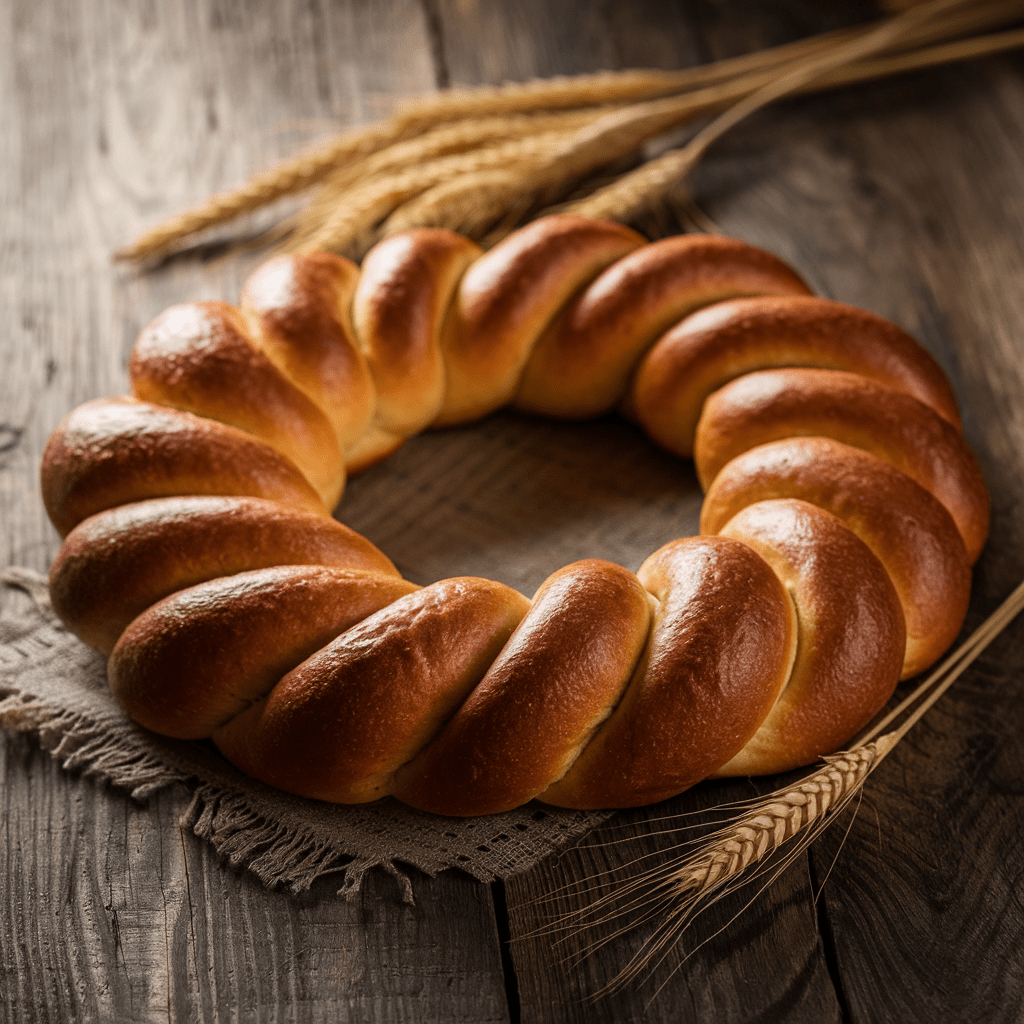Перекалач: A Deep Dive into Its Cultural and Culinary Significance
Introduction to Перекалач
Перекалач, pronounced “perekalach,” is a traditional bread from Ukraine and Russia, often associated with special occasions, religious festivals, and significant cultural events. Shaped like a horseshoe or a pretzel, it is not just a simple loaf of bread but holds deep cultural and symbolic meaning. The distinct form of Перекалач symbolizes eternity, continuity, and the cyclical nature of life, making it a powerful symbol in both Ukrainian and Russian folklore. Its presence in celebrations underscores its importance in maintaining and cherishing heritage.
The ring shape of Перекалач represents eternity, continuity, and the cyclical nature of life. This symbolism is deeply rooted in Ukrainian culture, where the bread plays an important role in ceremonies and celebrations, signifying unbroken cycles of life and unity.
History of Перекалач
Bread has always been a cornerstone of Slavic cuisine, serving as sustenance as well as a symbol of prosperity. The history of Перекалач dates back centuries when breadmaking was an art, passed down from generation to generation. Historically, Перекалач was baked to celebrate harvests, weddings, and religious ceremonies. It was believed that offering this bread would bring good fortune and protect against evil spirits.
The Cultural Significance of the Horseshoe Shape
The horseshoe or pretzel shape of Перекалач is not arbitrary. In Slavic culture, the horseshoe represents good luck, eternity, and protection. Just as a horseshoe is often hung above doors for protection, Перекалач was believed to bring the same type of luck to families. Its ringed shape represents the unbroken cycle of life and the continuity of family generations.
For weddings, the shape was also meant to represent unity. Giving the bread to a couple symbolized the wish for an eternal bond, a smooth, cyclical journey in life, and the hope for prosperity.
Recipe and Preparation of Перекалач
Making Перекалач involves a specific process that blends culinary skill with tradition. The dough, often rich in butter and eggs, is left to rise slowly to achieve a soft and fluffy texture. Its flavor is usually mildly sweet, sometimes complemented by a touch of honey. The secret lies in the technique of shaping the dough to create the distinctive horseshoe or ring form. This step is as important as the baking itself, as the shape carries deep meaning.
Ingredients for Перекалач traditionally include:
- Flour: Wheat flour forms the base of this traditional bread.
- Eggs: Used to enrich the dough.
- Milk: Adds a subtle creaminess to the dough.
- Butter: Provides flavor and tenderness to the bread.
- Yeast: Essential for leavening the dough, giving it a light texture.
- Sugar or Honey: For sweetness.
Once shaped and risen, Перекалач is baked until golden brown, often brushed with butter or egg wash to give it a glossy finish. In modern adaptations, people sometimes add sesame seeds or poppy seeds for extra flavor and decoration.
Regional Variations of Перекалач
Although Перекалач is traditionally associated with Ukraine and Russia, regional variations exist across Eastern Europe. For example:
- In Ukraine, the dough is usually softer and fluffier, with a more pronounced sweet taste, often served with honey on special occasions.
- In Russia, Перекалач may be made with a more rustic, heartier dough, and sometimes has savory variants with fillings like cheese or herbs.
Other Eastern European countries have adapted this bread into their own local customs, infusing it with unique flavors and sometimes different shapes.
Modern-Day Importance of Перекалач
While Перекалач continues to be a symbol of cultural heritage, it is also gaining popularity as a gourmet bread in various parts of the world. Artisan bakers, especially in the United States, have started experimenting with Перекалач, combining traditional methods with contemporary flavors. This brings the bread into the limelight for a new generation of food enthusiasts who appreciate its rich history.
Its symbolism continues to resonate, especially within the Slavic diaspora communities in the USA, where the bread is used in holiday celebrations, family gatherings, and religious observances.
Перекалач and Religion
In the Christian Orthodox tradition, bread holds special religious importance. It symbolizes the body of Christ, and during religious festivals such as Christmas and Easter, baking Перекалач becomes more than just culinary activity—it turns into a sacred ritual. This bread is often offered in churches and during religious gatherings, symbolizing the cyclical nature of life and the eternal bond between the physical and spiritual.
Health Benefits of Traditional Bread-Making
Traditional bread-making techniques used in creating Перекалач involve longer fermentation times, which have some health benefits. The slow fermentation allows the yeast to break down the gluten in the dough, making the bread easier to digest. Moreover, the lack of preservatives and artificial ingredients in homemade Перекалач makes it a healthier alternative to mass-produced breads.
How Перекалач is Enjoyed Today
In contemporary settings, Перекалач is often served as a centerpiece during festive meals, adorned with various accompaniments like butter, honey, or jams. Its slightly sweet flavor pairs perfectly with both savory and sweet toppings, making it a versatile addition to any table. Additionally, the bread is sometimes used in ceremonial feasts where guests break pieces off to share, symbolizing unity and togetherness.
FAQs
- What is the origin of Перекалач?
Перекалач originates from Ukraine and Russia, where it has been traditionally baked for centuries during religious and cultural celebrations. - Why is Перекалач shaped like a horseshoe?
The horseshoe shape symbolizes good luck, eternity, and protection in Slavic culture, representing the cyclical nature of life and the desire for prosperity. - Is Перекалач a sweet or savory bread?
Перекалач is usually slightly sweet, though some regional variations introduce savory elements like cheese or herbs. - How is Перекалач different from other Eastern European breads?
Its unique shape and symbolic meaning set Перекалач apart from other breads. While many Eastern European breads are round or loaf-shaped, the horseshoe or ring shape of Перекалач carries special cultural significance. - Where can I buy Перекалач in the USA?
Some specialty bakeries, especially those focusing on Eastern European or Slavic cuisine, may sell Перекалач. Additionally, many families with Slavic heritage continue to bake it at home, keeping the tradition alive.
Conclusion
Перекалач is much more than just bread—it’s a symbol of heritage, continuity, and unity. From its humble beginnings in Ukraine and Russia to its modern interpretations in bakeries around the world, this bread continues to hold significant cultural and spiritual meaning. Its distinct shape, coupled with its rich symbolism, ensures that Перекалач remains an important part of Slavic tradition for generations to come.






